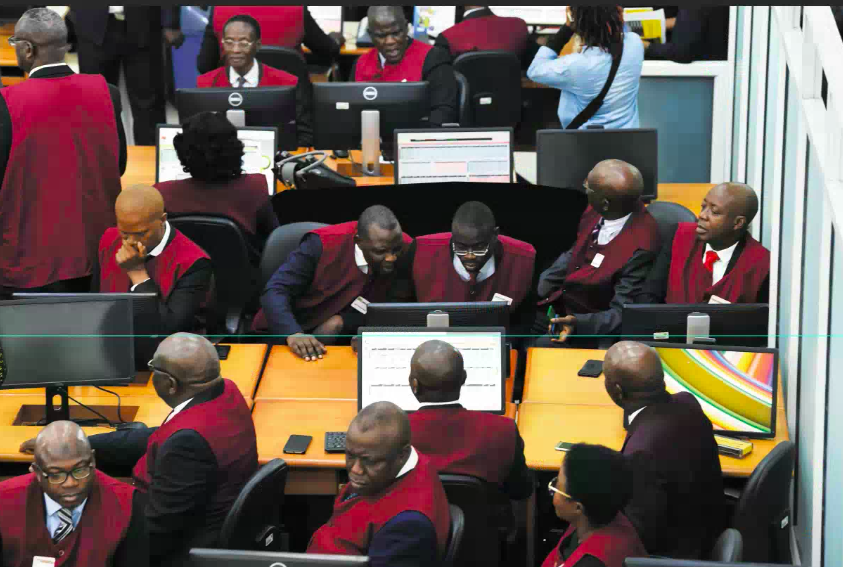*Morgan Stanley predicts 60% chance of global recession by year end
Emmanuel Addeh in Abuja
Global stock markets extended their recent rout at the weekend, with S&P 500 companies wiping out $5 trillion in stock market value since U.S. President, Donald Trump, unveiled sweeping tariffs on Wednesday last week while investors fled to the safety of government bonds.
The Nasdaq confirmed it was in a bear market, ending more than 20 below its record high close, while oil prices and other commodities plunged.
That $ 5 trillion loss marked a record two-day decline for the S&P 500 benchmark, exceeding a two-day loss of $3.3 trillion in March 2020 when the pandemic ripped across global markets, according to LSEG data compiled by Reuters.
Responding to Trump’s tariffs, China on Friday said it would impose additional levies of 34 per cent on American goods, confirming investor fears that a full-blown global trade war is underway and that the global economy may be at risk of a recession.
Trump slapped a 10 per cent tariff on most U.S. imports and much higher levies on dozens of countries, erecting the steepest trade barriers in more than 100 years.
“It’s sort of the worst fears of where the tariff programme was headed,” said Rick Meckler, partner at Cherry Lane Investments, a family investment office in New Vernon, New Jersey.
“For those investors who were sure it was just a negotiation – while that still may be true at some point – it’s getting awfully deeper into the details and more dangerous for companies,” Meckler added.
S&P 500 companies suffered their biggest one-day loss in value since the emerging coronavirus pandemic sent global markets into a tailspin on March 16, 2020. S&P 500 companies suffered their biggest one-day loss in value since the emerging coronavirus pandemic sent global markets into a tailspin on March 16, 2020.
Meanwhile, the Dow Jones Industrial Average and pan-European 600 index each confirmed they were in a correction. All three of the major U.S. stock indexes suffered their biggest weekly percentage losses since March 2020, and the Cboe Volatility Index jumped to 45.31, its highest closing level since April 2020.
Companies with exposure to China fell across the board, with Apple dropping 7.3 per cent . The chipmakers index sank 7.6 per cent . Bank and energy shares dropped amid the recession fears, the Reuters report said.
The Dow Jones Industrial Average fell 2,231.07 points, or 5.50 per cent, to 38,314.86. The index confirmed a correction, finishing more than 10 per cent below its record closing high from December 4.
The S&P 500 fell 322.44 points, or 5.97 per cent, to 5,074.08 and the Nasdaq Composite fell 962.82 points, or 5.82 per cent, to 15,587.79.
The pan-European index closed 5.1 per cent lower, its biggest daily loss since the COVID-19-fuelled selloff in 2020. The index fell nearly 12 per cent from its March 3 all-time closing high, confirming it was in correction territory.
Also, Morgan Stanley Capital International (MSCI), a gauge of stocks across the globe, fell 43.35 points, or 5.37 per cent, to 764.29, and was set for its biggest weekly percentage drop since 2020 at the weekend,
Besides, oil prices plunged about 7 per cent to settle at their lowest in over three years, after the tariff response from China, the world’s top oil importer. Brent crude futures fell 6.5 per cent to settle at $65.58. U.S. crude futures lost 7.4 per cent to settle at $61.99.
Federal Reserve Chair, Jerome Powell, said in remarks at a business journalists’ conference in Arlington, Virginia, that Trump’s new tariffs are “larger than expected” and the economic fallout, including higher inflation and slower growth, likely will be as well.
He also said the U.S. central bank does not have a prediction of a downturn in its outlook but he recognised private-sector forecasters are shifting on that front.
Earlier, investment bank JP Morgan said it was forecasting a 60 per cent chance of the global economy entering a recession by year-end, up from 40 per cent previously.
“I think (Powell’s) comments will be disappointing for those who believe that the Fed is going to step in anytime soon,” said Peter Cardillo, chief market economist at Spartan Capital Securities in New York.
The U.S. dollar recovered against the euro and yen, with Powell signalling a cautiou
s tone on future easing. The dollar index was last up 0.7 per cent on Friday after its biggest fall since November 2022 on Thursday.
After years of huge flows into U.S. stocks and a booming American economy, investors are grappling with where to put their cash.
That helped drive a powerful rush towards government bond markets. The yield on the benchmark U.S. 10-year Treasury note fell 12.2 basis points to 3.933 per cent after falling to a six-month low of 3.86%. Yields move inversely to prices.
The German 10-year bond yield , the benchmark for the euro zone bloc, fell as much as 17 basis points during the day.
Money market futures were pricing in cumulative rate cuts of 110 basis points from the Fed by the end of this year, compared with about 75 bps a week earlier.



